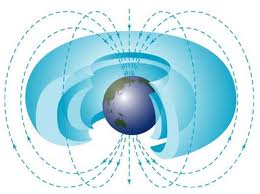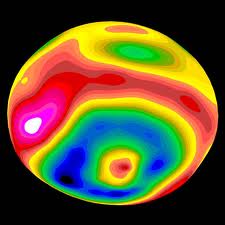

School Pupils to Partner with Research Scientists –
The Van Allen radiation belts are a hazardous environment, full of “killer” electrons that can be lethal to orbiting satellites. And when those electrons sometimes hit the Earth’s atmosphere, they alter its chemistry—with implications for climate variation. Now, students at a school in Yorkshire, England, are set to help scientists better understand the belts. Dr. Andrew Kavanagh presented this innovative project between Lancaster University and Headlands School and Community Science College on April 20 at the Royal Astronomical Society’s National Astronomy Meeting (NAM 2011) in Llandudno, Wales.
The Van Allen belts were discovered at the dawn of the space age by the Explorer 1 satellite, launched in 1958, but scientists still do not really understand how they form and how they change with time.
In the new partnership, Headlands School will host a sensitive radio receiver supplied by ionospheric physicists from the Space Plasma Environment and Radio Science Group at Lancaster University. The receiver will form part of the global Antarctic–Arctic Radiation-belt (Dynamic) Deposition–VLF Atmospheric Research Konsortium (AARDDVARK) consortium of international universities and will pick up signals from very low frequency transmitters from around the globe.
Van Allen belt electrons that drop into the atmosphere between the transmitters and the receiver will change the radio signals between them. The Headlands receiver is particularly well placed as it will monitor signals that cross right under the footprint of the radiation belts.
Long-term monitoring will let AARDDVARK scientists determine how much of the change in the radiation belts is due to loss to the atmosphere and how much of a direct impact geomagnetic storms have on the middle and lower regions of our atmosphere. The project will support the aims of the NASA Radiation Belt Storm Probe Mission due to be launched in 2012.
The students from Headlands School will have direct access to the data and will undertake projects looking at how the signal varies and will look at sources of radio noise such as lightning. They will also be in direct contact with the project scientists giving them an insight into how modern scientific research is carried out.
Dr. Kavanagh sees the collaboration as a real way to engage schoolchildren with science. “We hope that by interacting with this project the students will get a better feel for how important science can be for their everyday lives, as well as stimulating them to ask questions about the wider Universe,” he says.
MEANWHILE, CLOSER TO HOME, another program that links schools with professional astronomers is being offered through NASA and Caltech.
NITARP, the NASA/IPAC Teacher Archive Research Program, gets teachers involved in authentic astronomical research. According to Dr. Luisa Rebull, Research Scientist at Caltech’s Spitzer Science Center, “We partner small groups of educators with a mentor professional astronomer for an original research project. The educators incorporate the experience into their classrooms and share their experience with other teachers.”
Dr. Rebull points out that each team does original research using real astronomical data, not canned labs or reproductions of previously done research. “Most, but not all, of our educators are grade 8-13, but informal educators have participated as well, she adds. “The kinds of educators we are looking for are those who already know the basics of astronomy, and are interested in learning exactly how astronomy research is conducted.”
The program runs January through January. Applications are available now and due on September 23.
For more information on NITARP go to nitarp.ipac.caltech.edu
You can contact Bob Eklund at [email protected], or visit his websites at www.bobeklund.com a





Be the first to comment